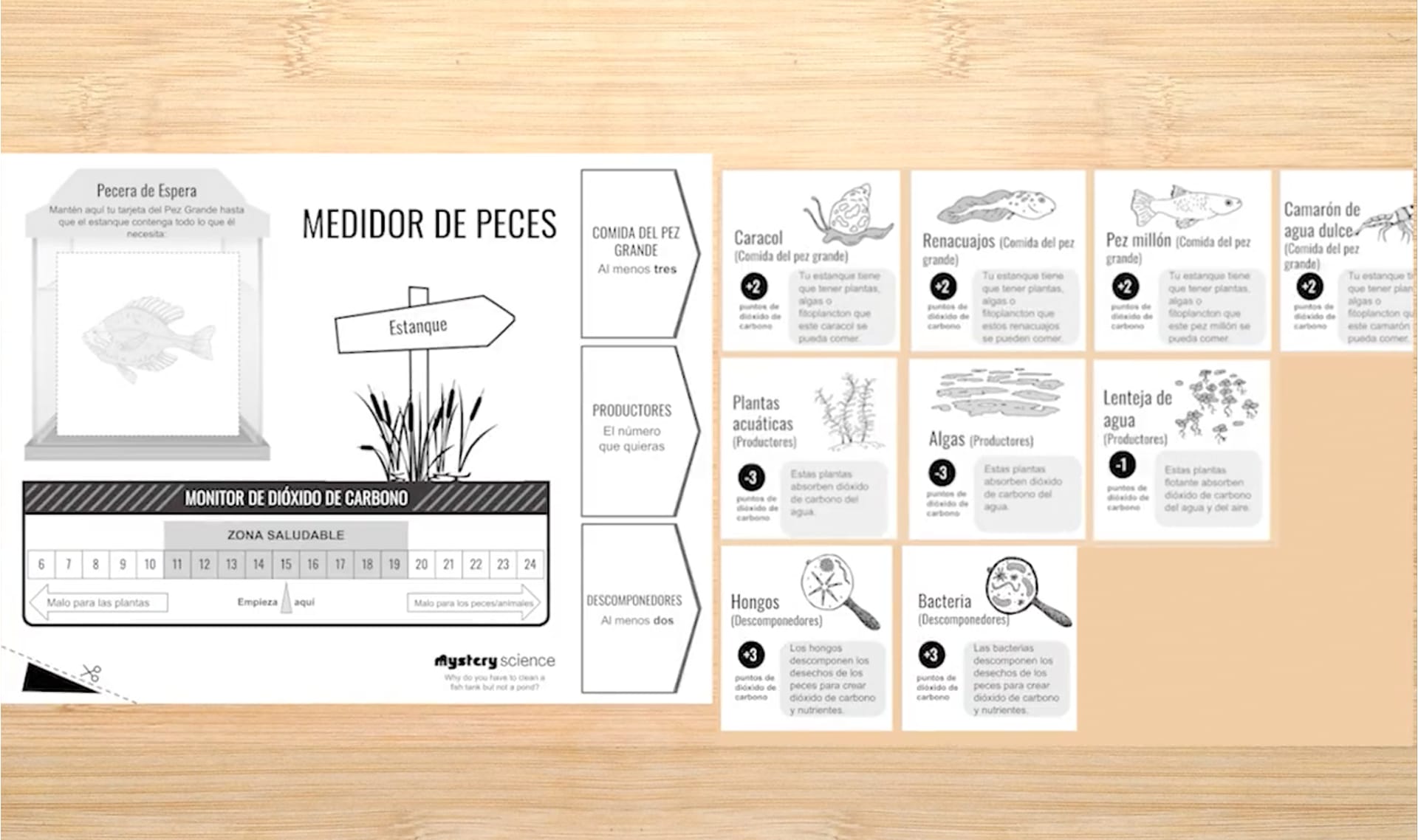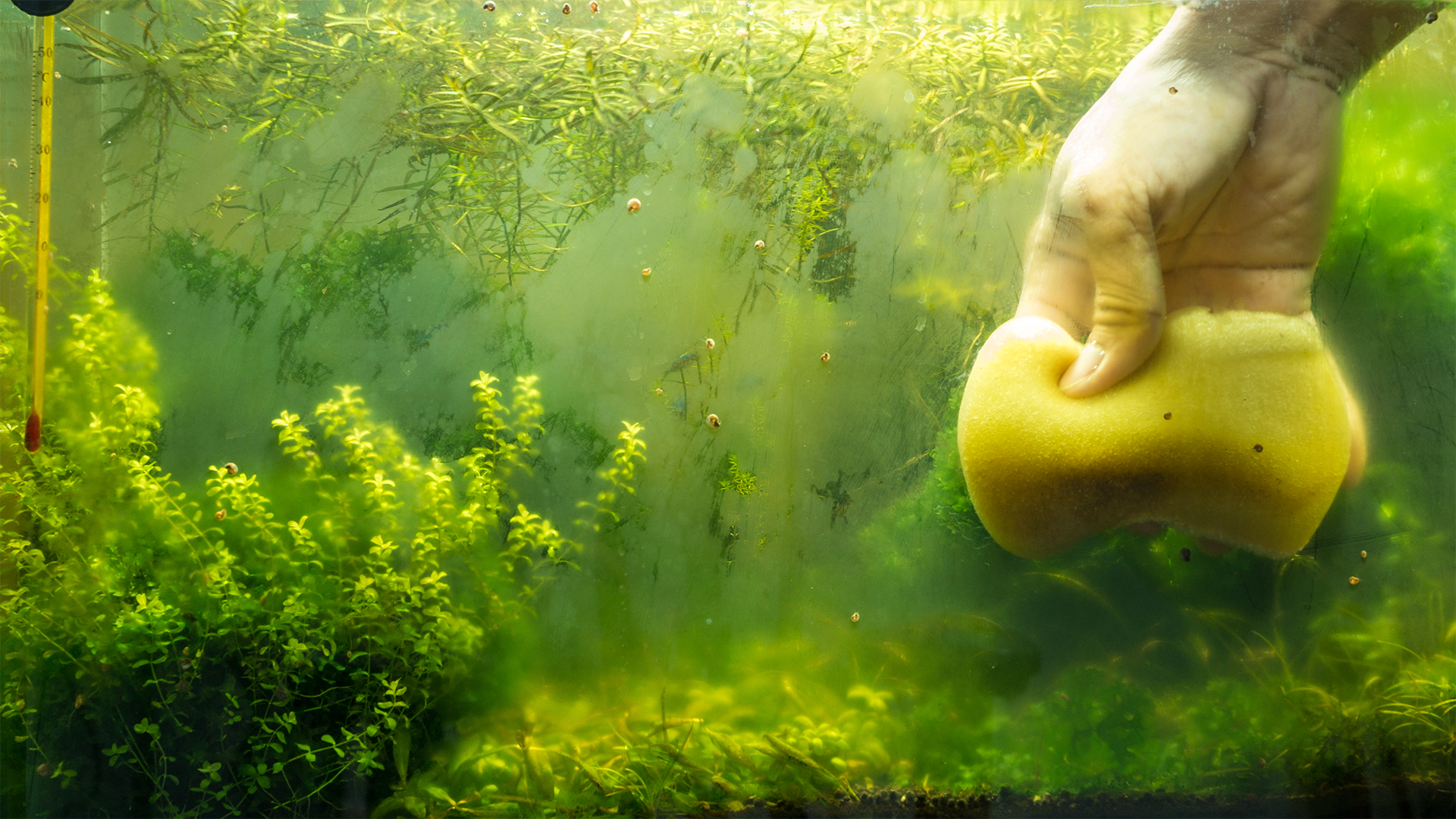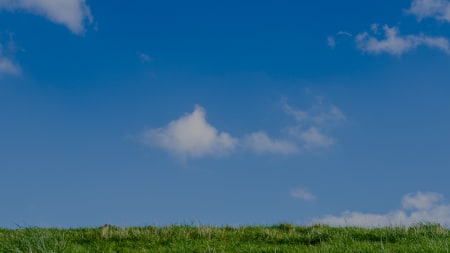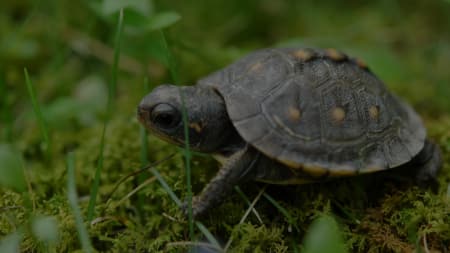
CONVERSEMOS (1 de 2):
¿Cuál crees que era el problema en la pecera?
CONVERSEMOS (2 de 2):
¿Qué harías para tratar de ayudar a los peces?

CONVERSEMOS:
¿Por qué no se mueren los peces en un estanque si el estanque no tiene un filtro para limpiar los desechos que están en el agua?

CONVERSEMOS:
¿Se te ocurre alguna manera de BAJAR los niveles de dióxido de carbono en un estanque?
Pista:
¿Qué seres vivientes NECESITAN dióxido de carbono?

1. DIBUJA: Haz un dibujo de las relaciones que existen en el ecosistema de un estanque. Para empezar, escribe "plantas," "descomponedores," y "animales" en una hoja. (No pongas las palabras demasiado cerca, porque escribirás cosas entre ellas). Después dibuja flechas y escribe las cosas que las conectan.
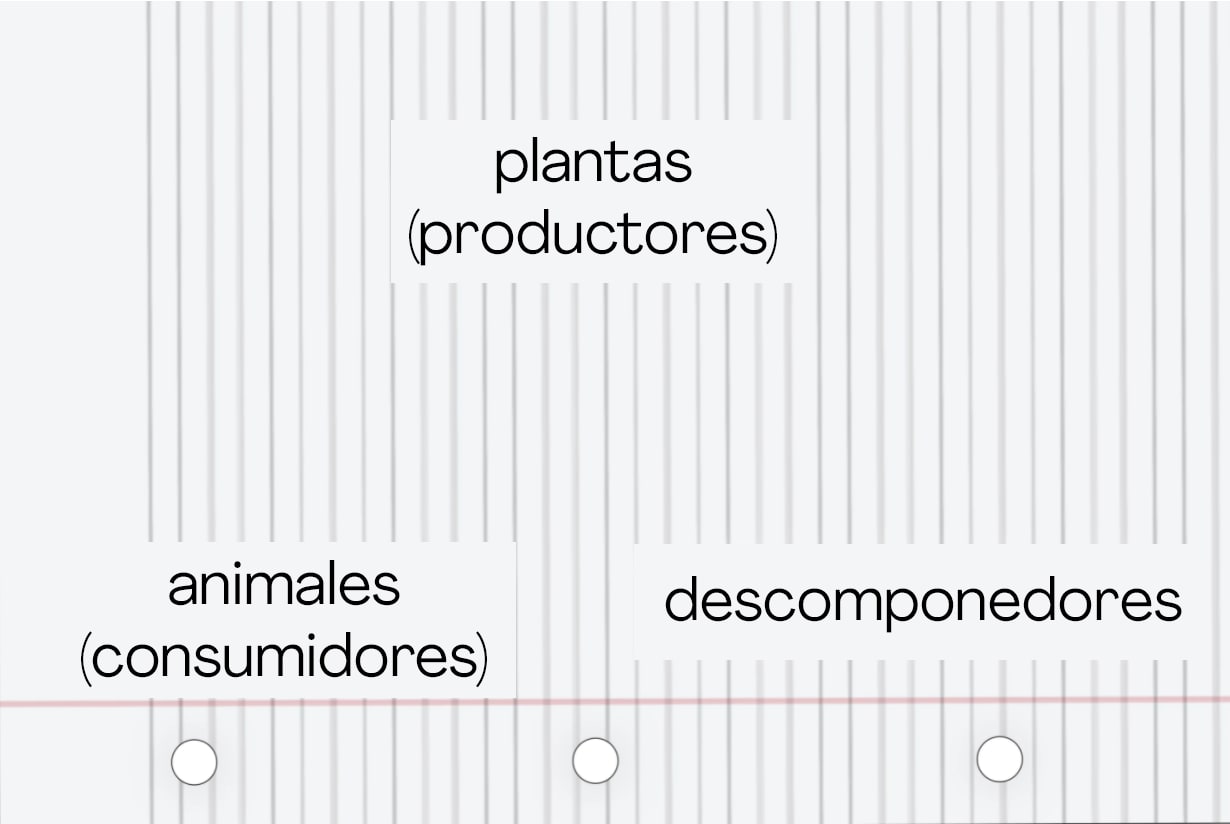
2. REVISA: ¿Incluiste flechas para los desechos, los nutrientes, dióxido de carbono, y oxígeno en tu modelo? Si no lo hiciste, hazlo ahora.
3. ESTO FUE LO QUE NOSOTROS HICIMOS: Este es nuestro modelo de un ecosistema, pero hay muchas maneras de dibujarlo y el tuyo puede ser diferente.
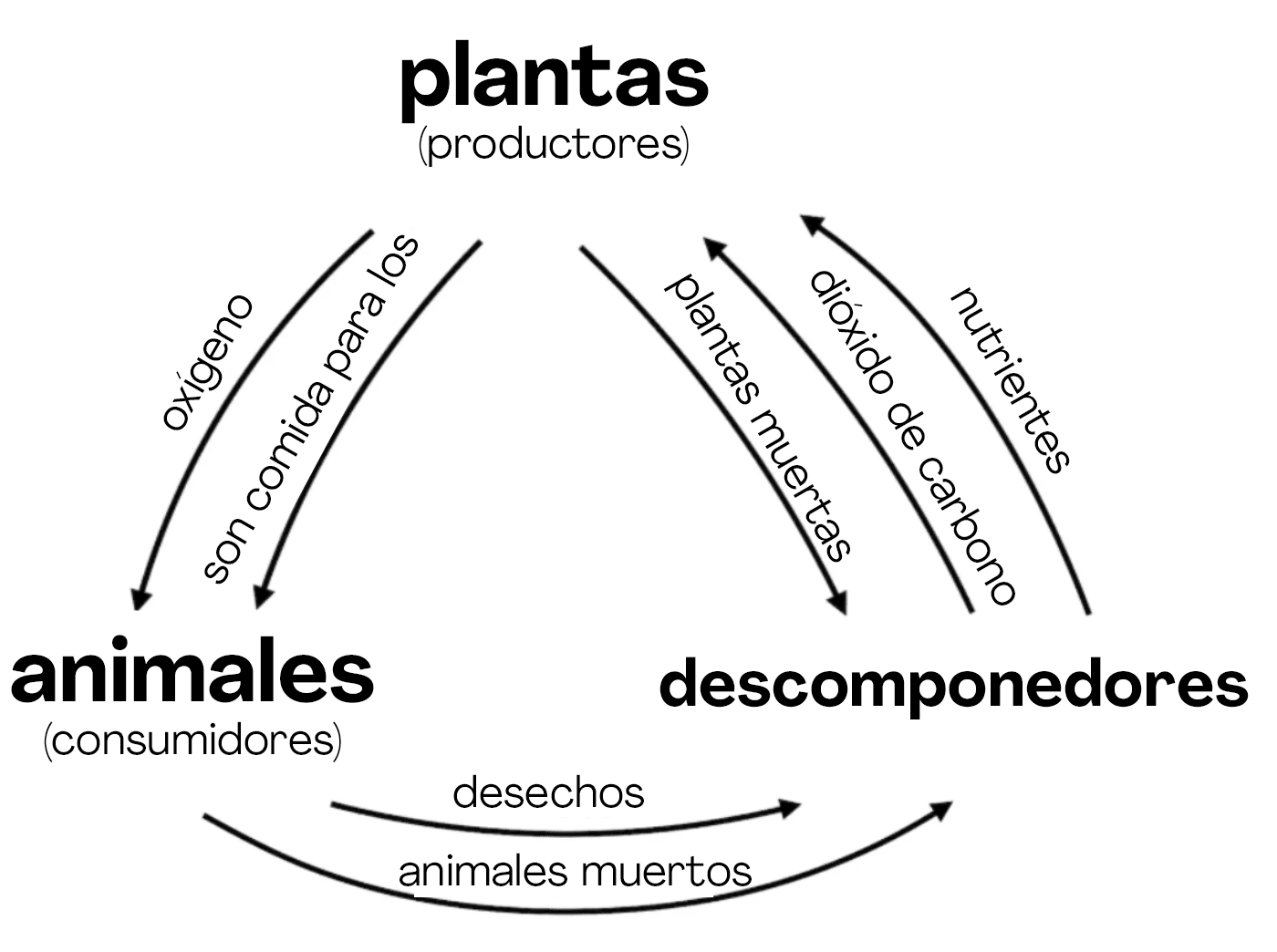


01/22
compartirán tarjetas y juntos crearán un ecosistema.

02/22

03/22
un juego de tarjetas.

04/22
el puntero. Luego, pon al Pez Grande en la pecera de espera. Lee
lo que necesita el pez grande.

05/22
de peces, y luego coloca el puntero en 15.

06/22
una de las tarjetas que le agregarán dióxido de carbono a tu
estanque.

07/22
para el pez grande, los productores y los descomponedores. Fíjate
qué tipo de carta tienes y ponla donde pertenece.

08/22
estanque. Mueve el puntero para agregar la cantidad de puntos que
dice en la carta que escogiste.

09/22
organismo. Ponlo en el lugar indicado en el estanque. Mueve el
puntero a la izquierda para restar puntos.

10/22
el nivel de dióxido de carbono. Cuando creas que tu estanque
está listo, agrega el pez grande.

11/22
Si necesitas hacer una pausa...
If you need a natural stopping point!
Teachers: If you are short on time, this is a good stopping point. You can play the Big Fish ecosystem game in a future session.
If you’ll be playing another day, have each pair of students clip their cards, their Fish-o-meter, their pointer and their worksheets together with a binder clip.
Si vas a continuar la actividad, ve a la siguiente página.

12/22
si eres el primero en lograr tener un ecosistema saludable para
un Pez Grande.

13/22
compañera tienen que encontrar a otro par de compañeros o
compañeras con quién jugar.

14/22

15/22
tarjetas, quién leerá las reglas, y quién revisará el estanque.

16/22
Recorta el puntero si no lo has hecho. Coloca al pez grande en la
pecera de espera.

17/22
acabas de cortar. Puedes barajarlas a mano o mezclarlas. Luego,
dale cinco tarjetas a cada jugador o jugadora.

18/22
el centro de la mesa y pon las tarjetas restantes boca abajo en el
cuadro de Escoge una Tarjeta.

19/22
necesidades del pez grande. Debes mantener el puntero en la
zona saludable todo el tiempo.

20/22
tarjeta del montón. Luego podrá usar cualquier tarjeta que
tenga en una de tres maneras.

21/22
leerlas en voz alta. Sigan jugando hasta que alguien esté listo
para introducir al pez grande y diga “¡Pez Grande!”

22/22
Obtén las respuestas de la persona que dijo “Pez grande”. Sigan
jugando hasta que alguien gane.

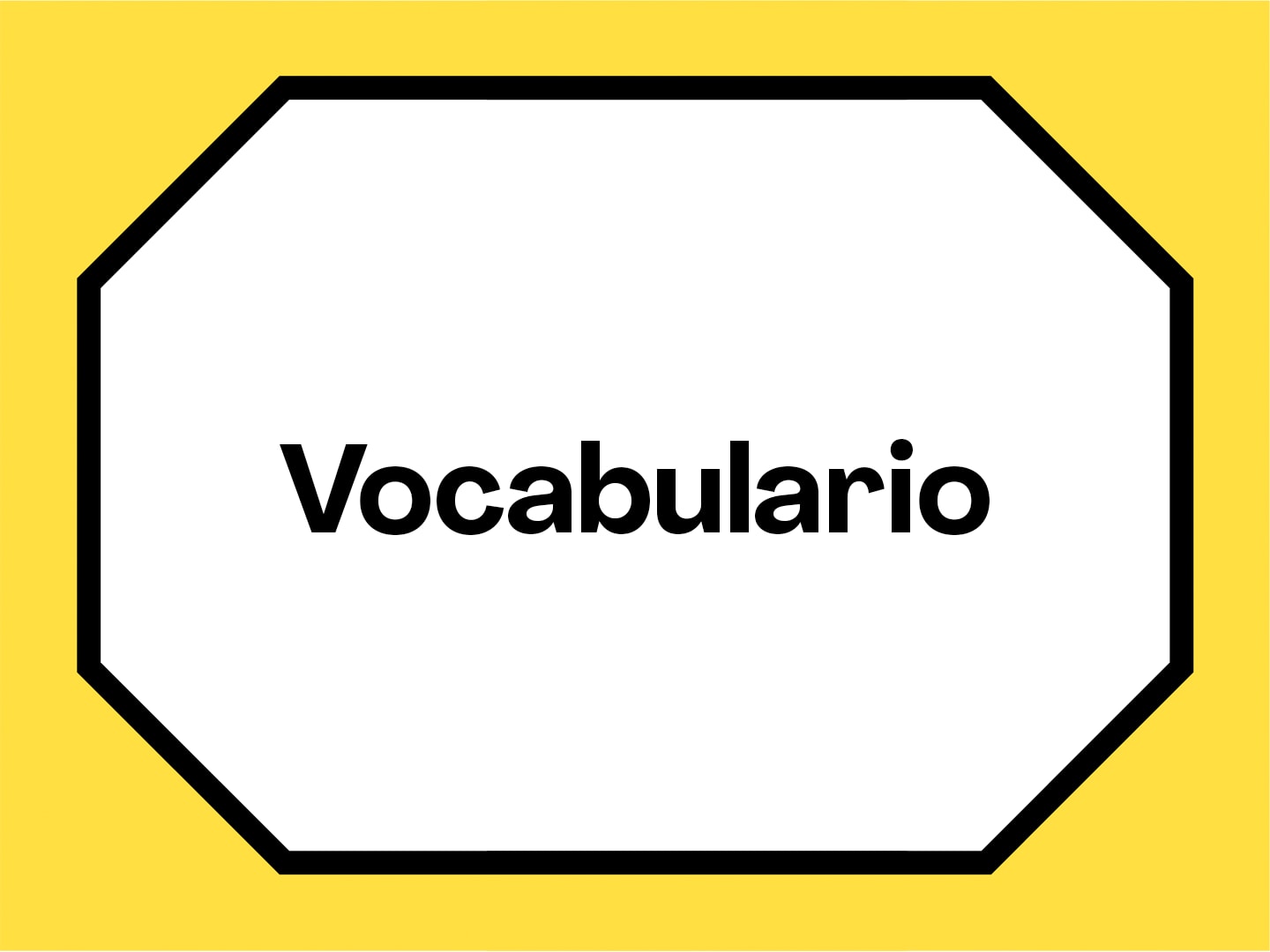
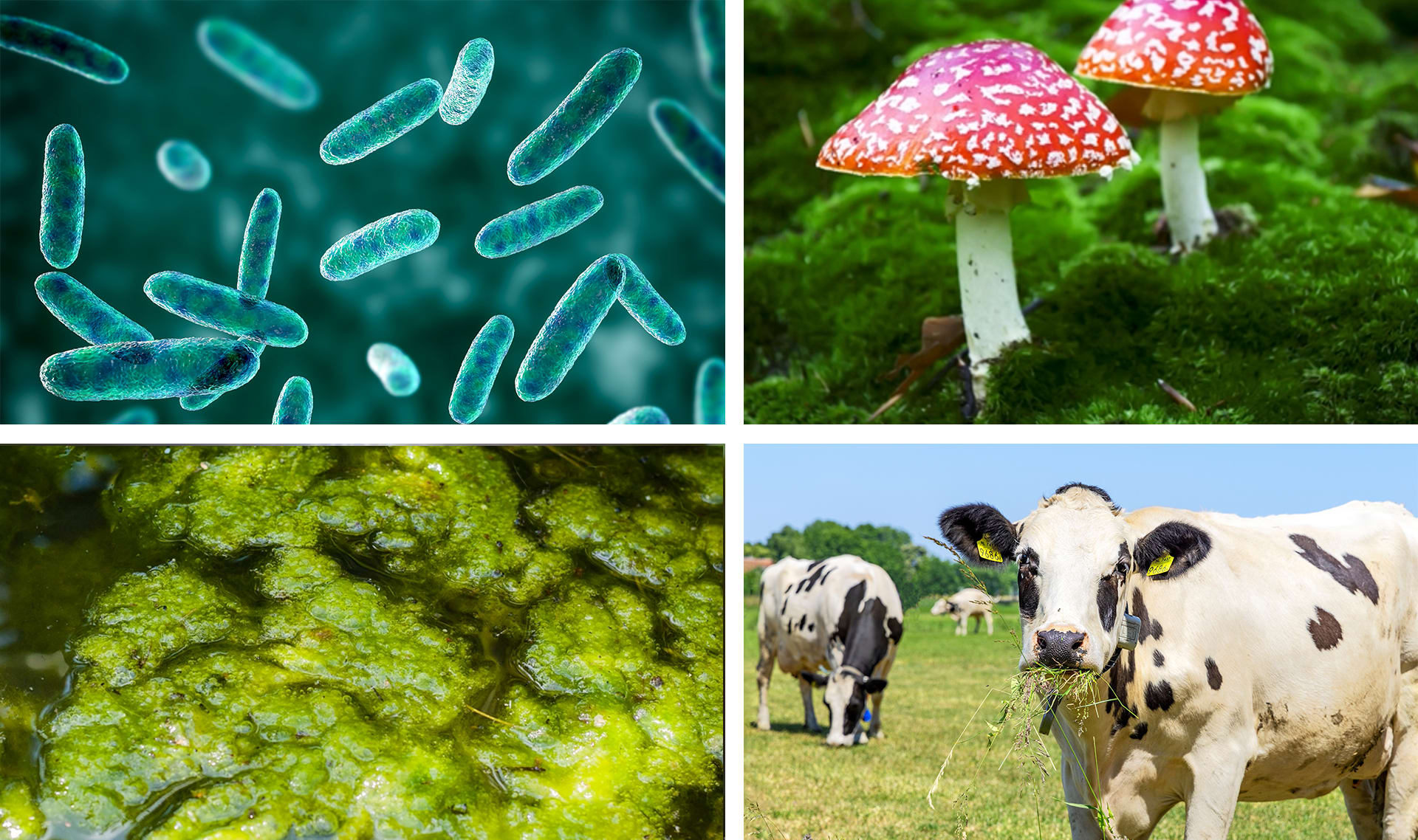
organismo
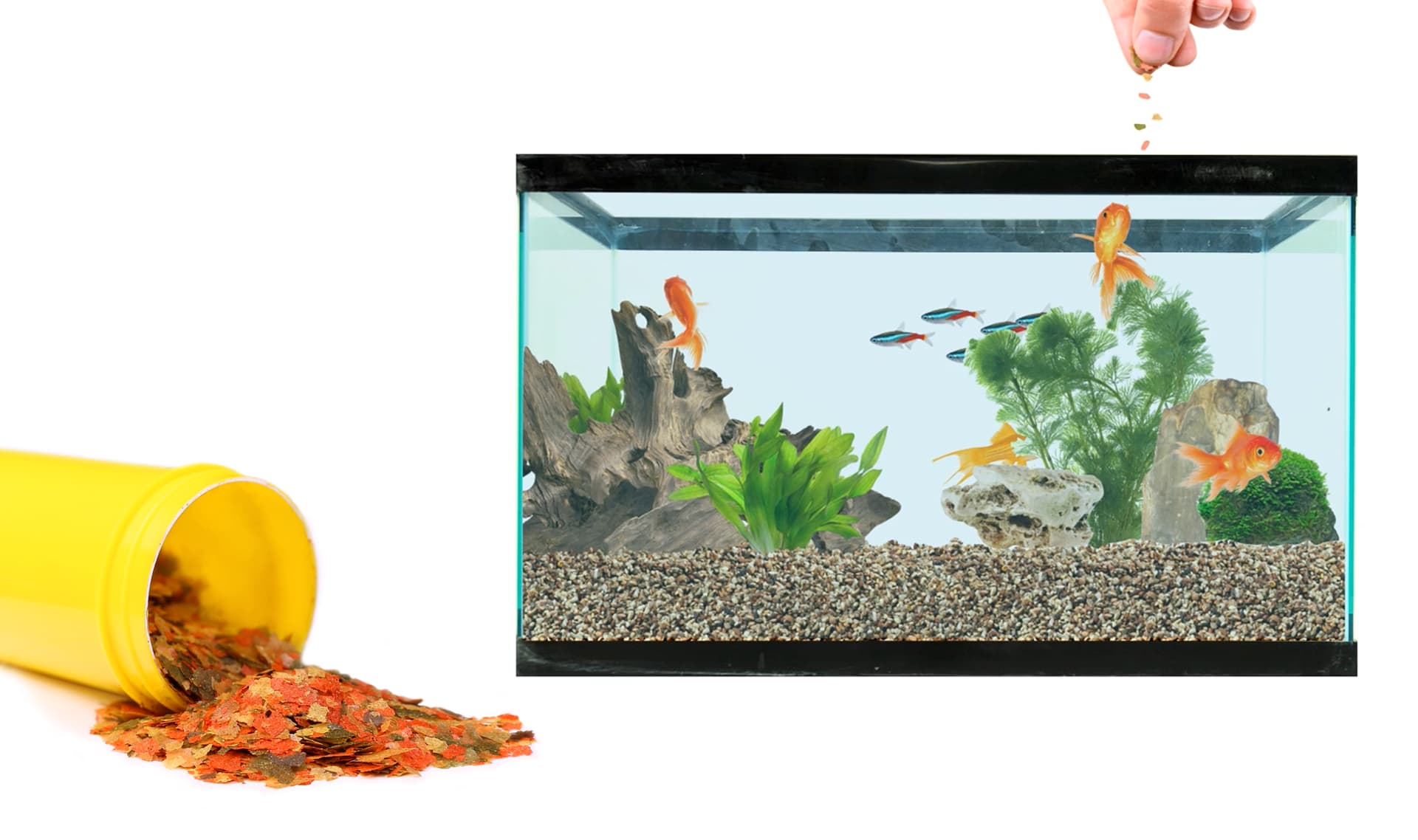
nutriente
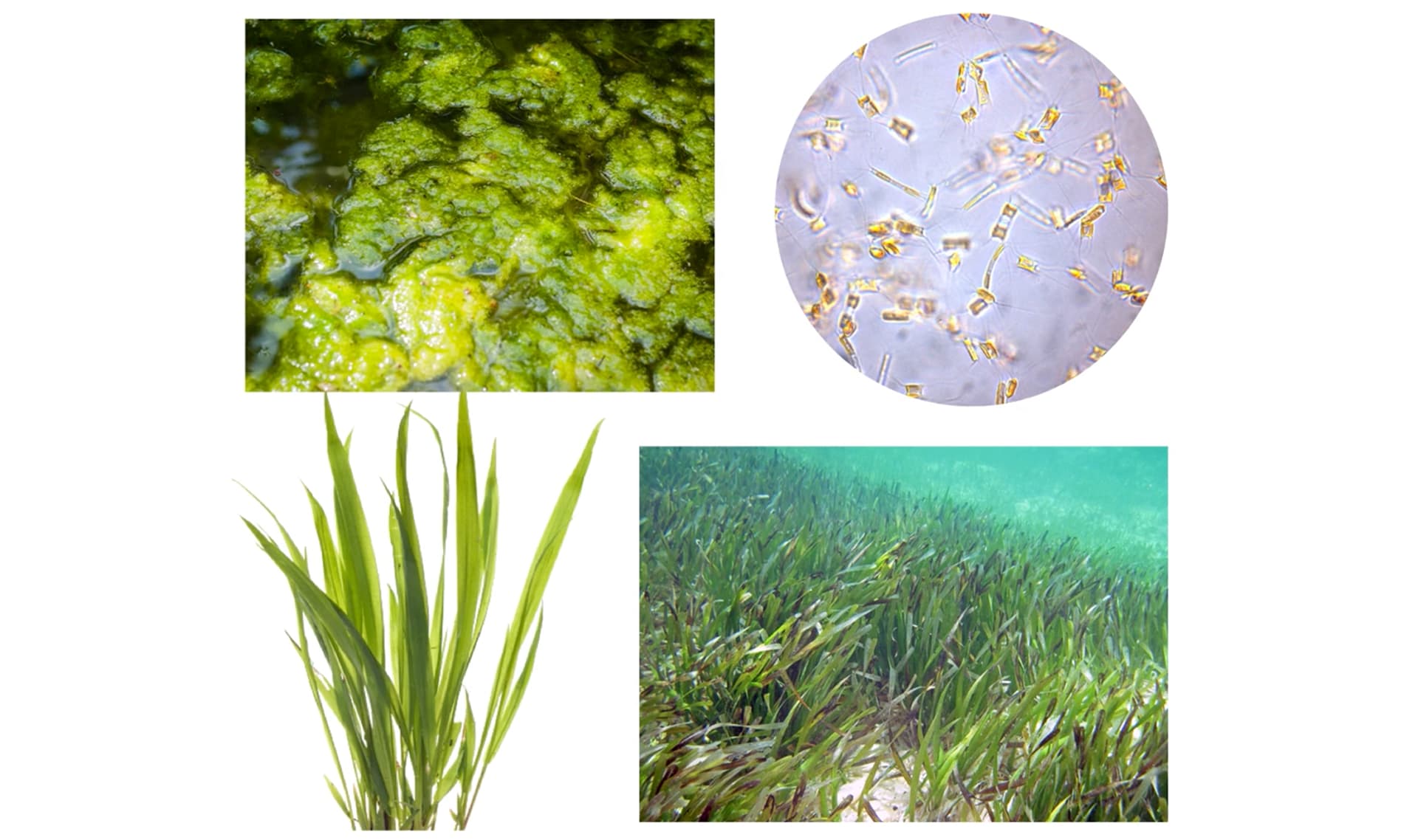
productor
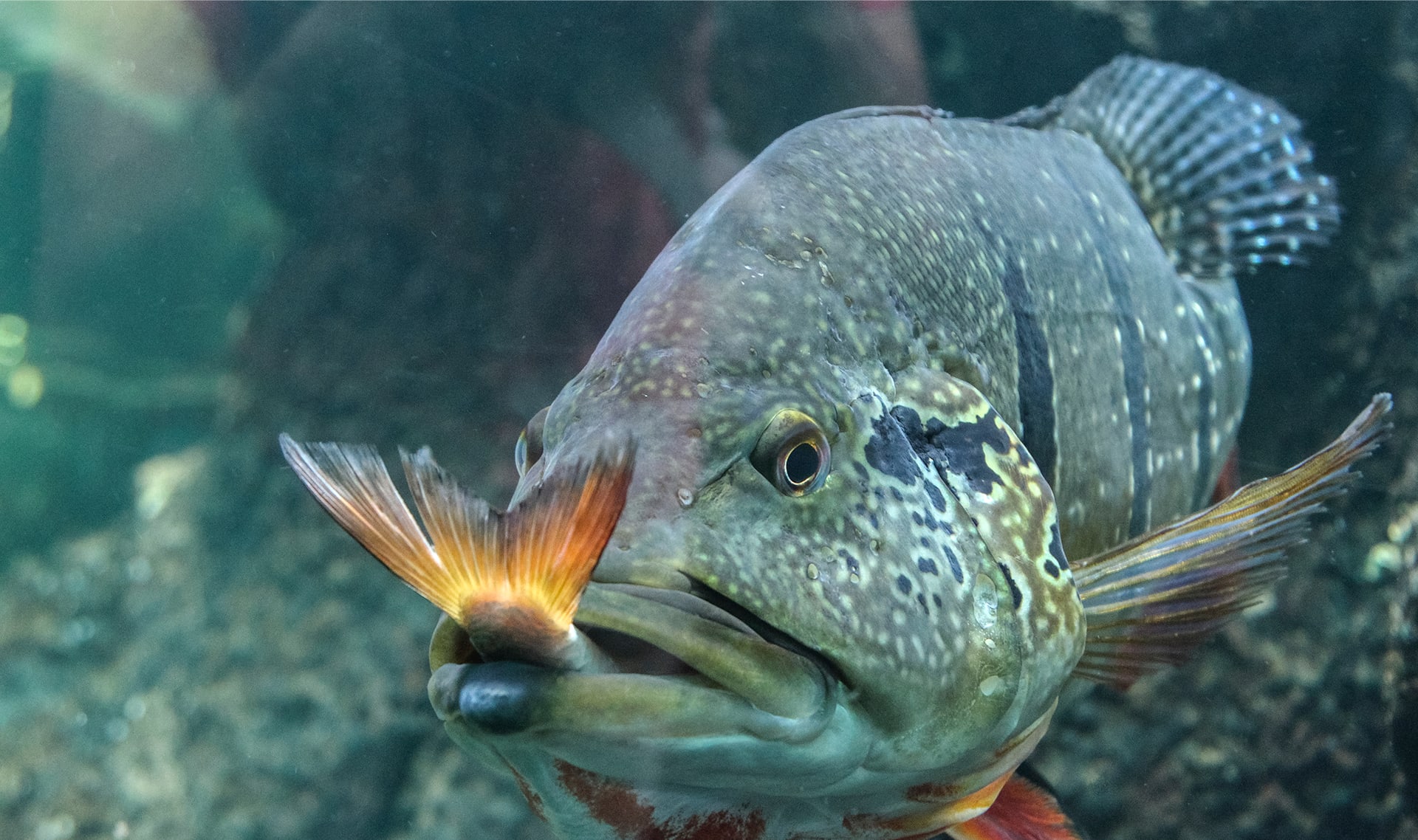
consumidor
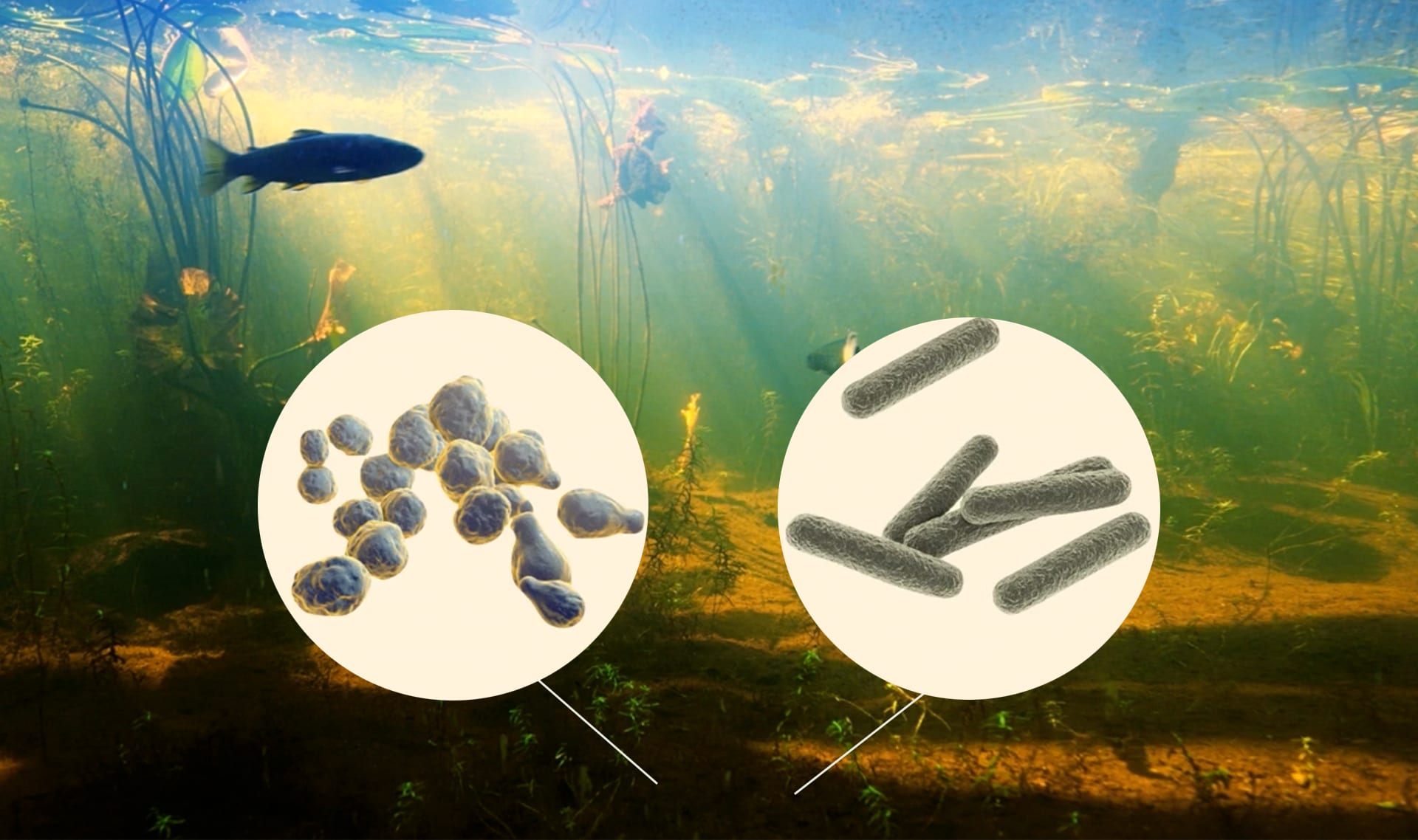
descomponedor
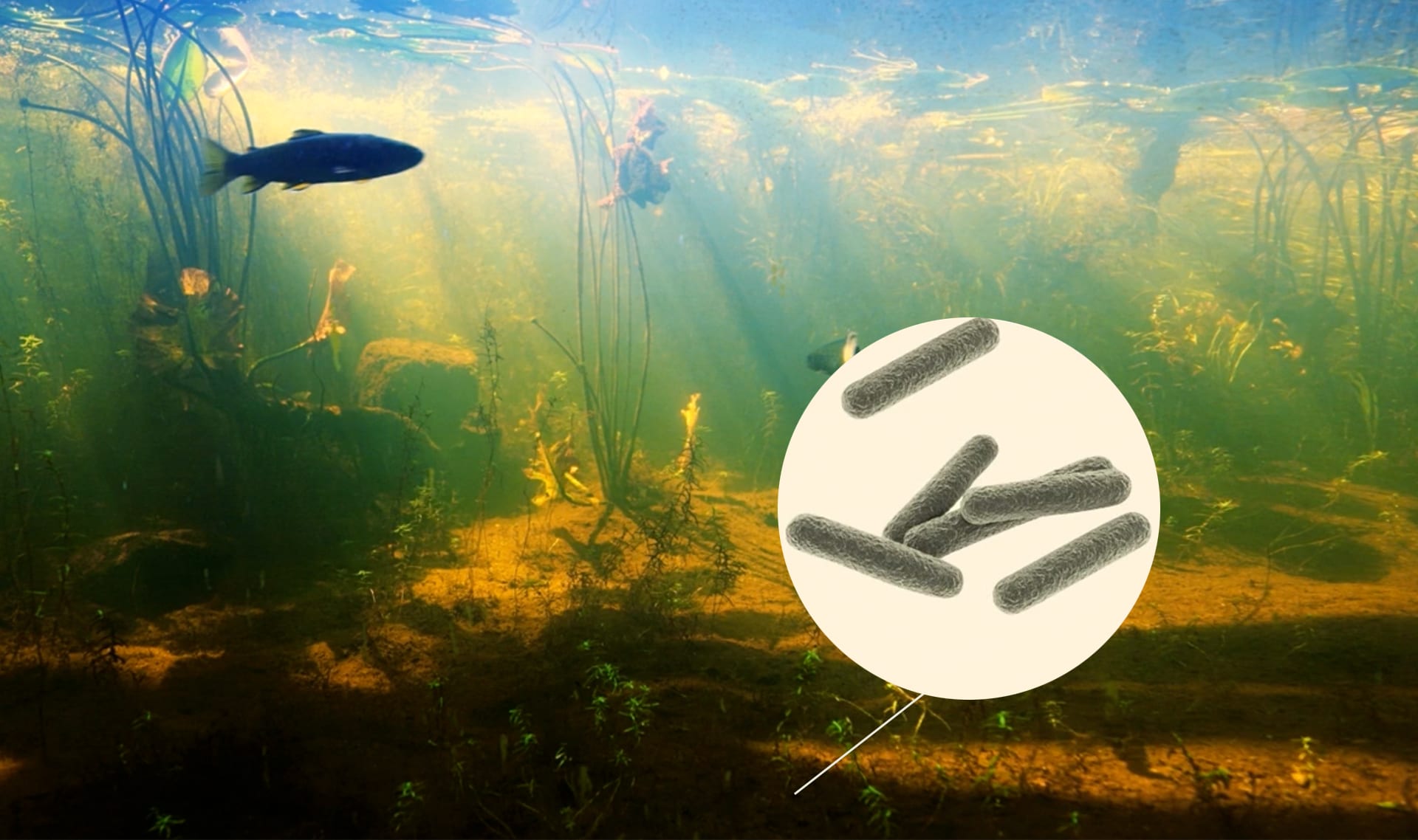
bacteria
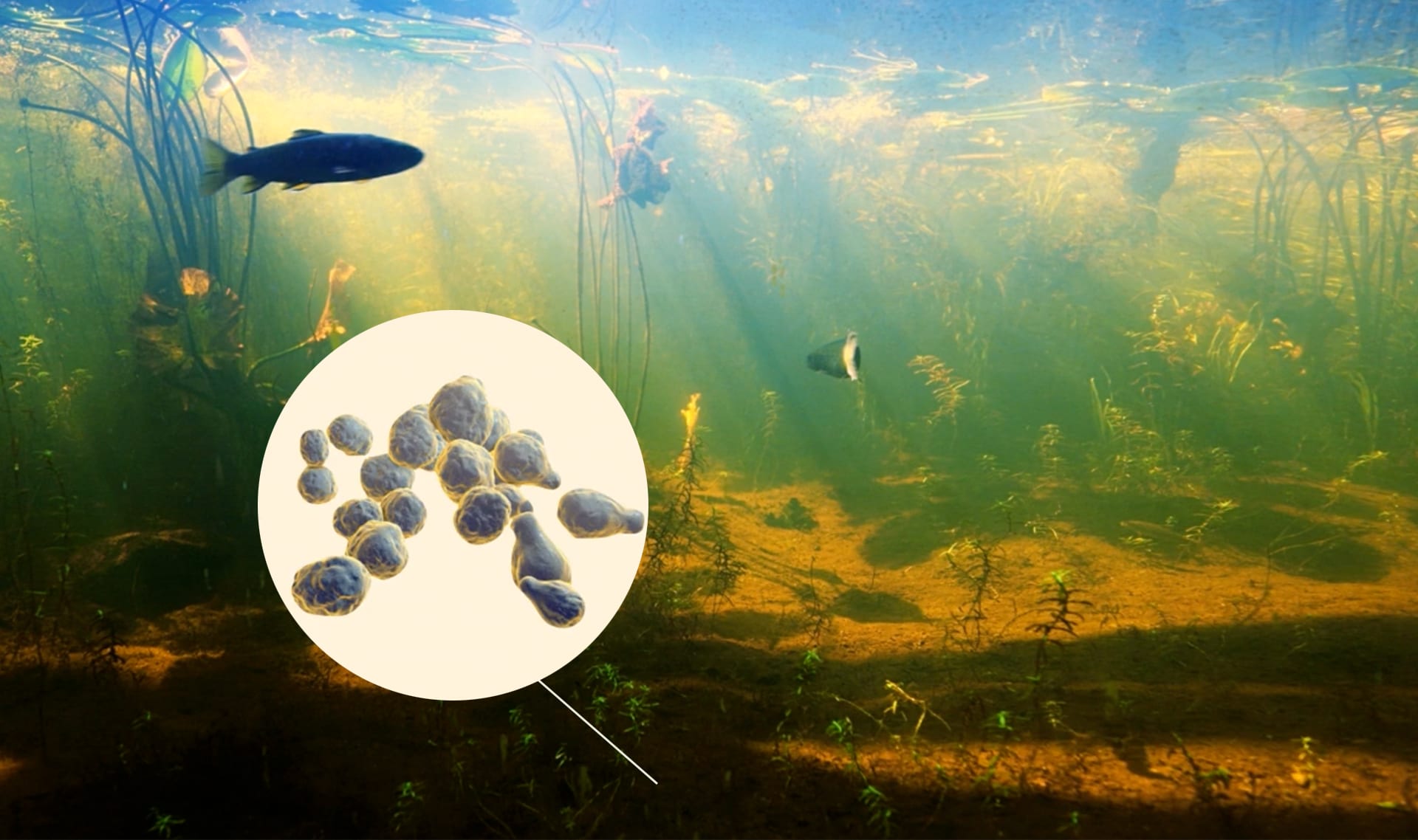
fungi
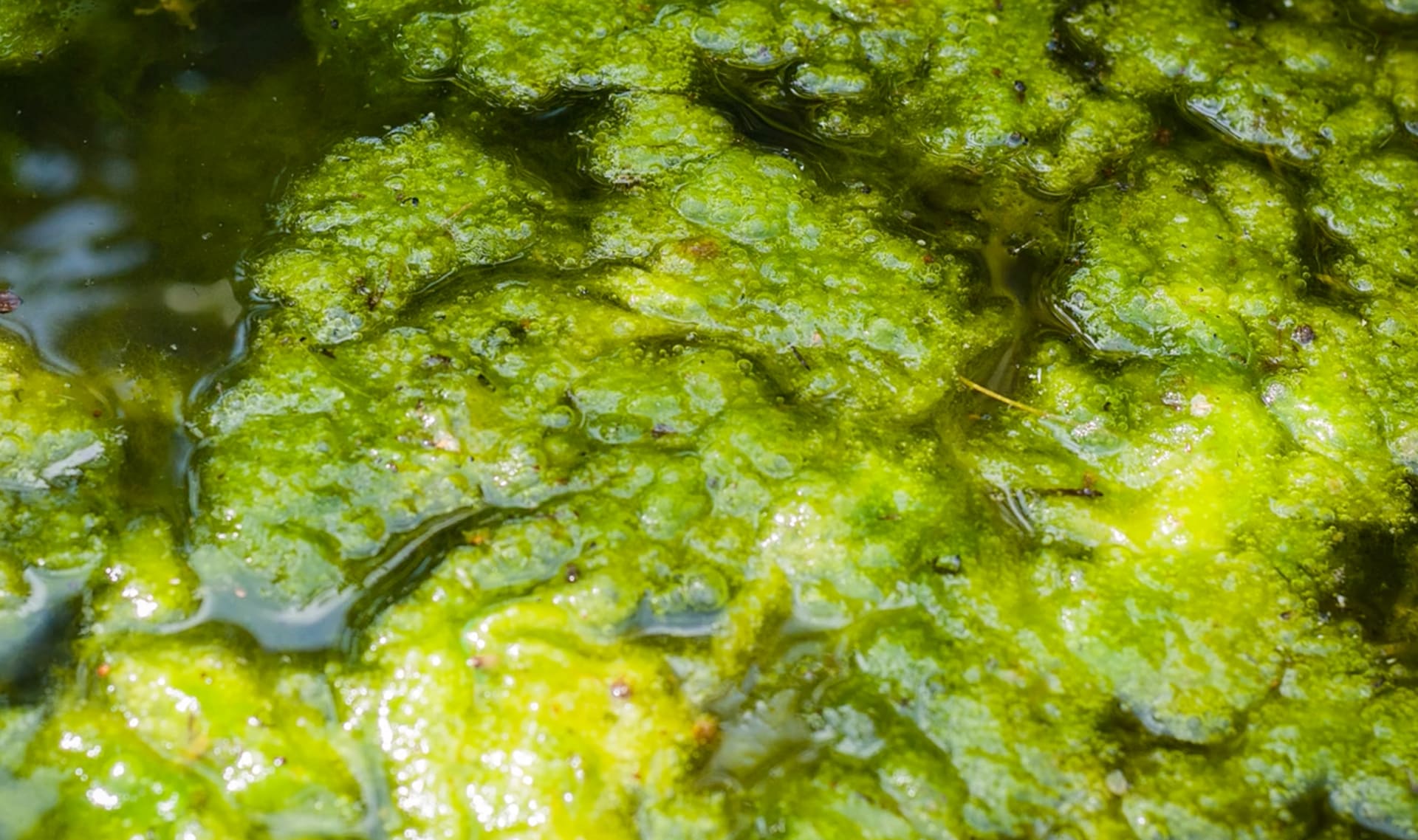
algas
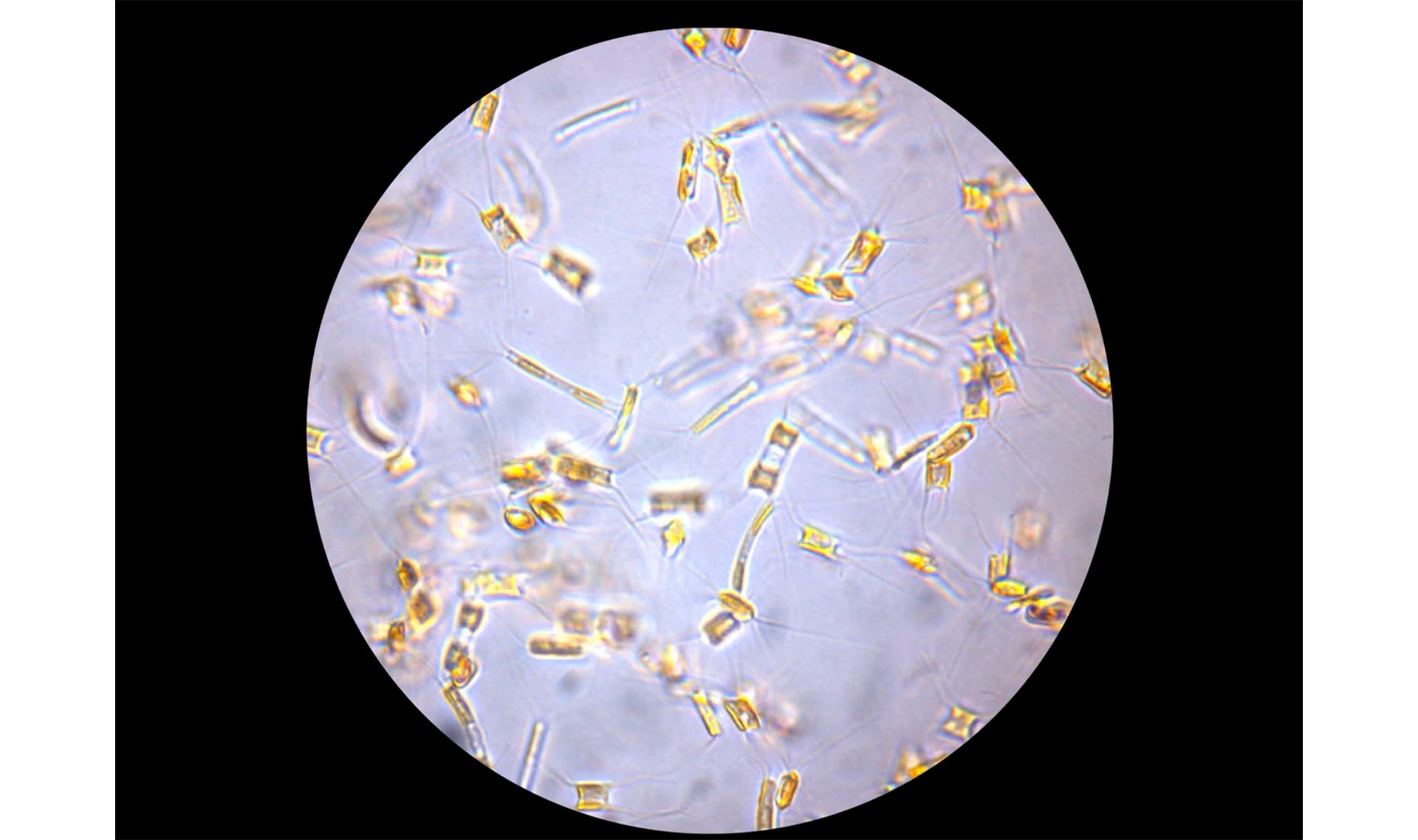
fitoplancton
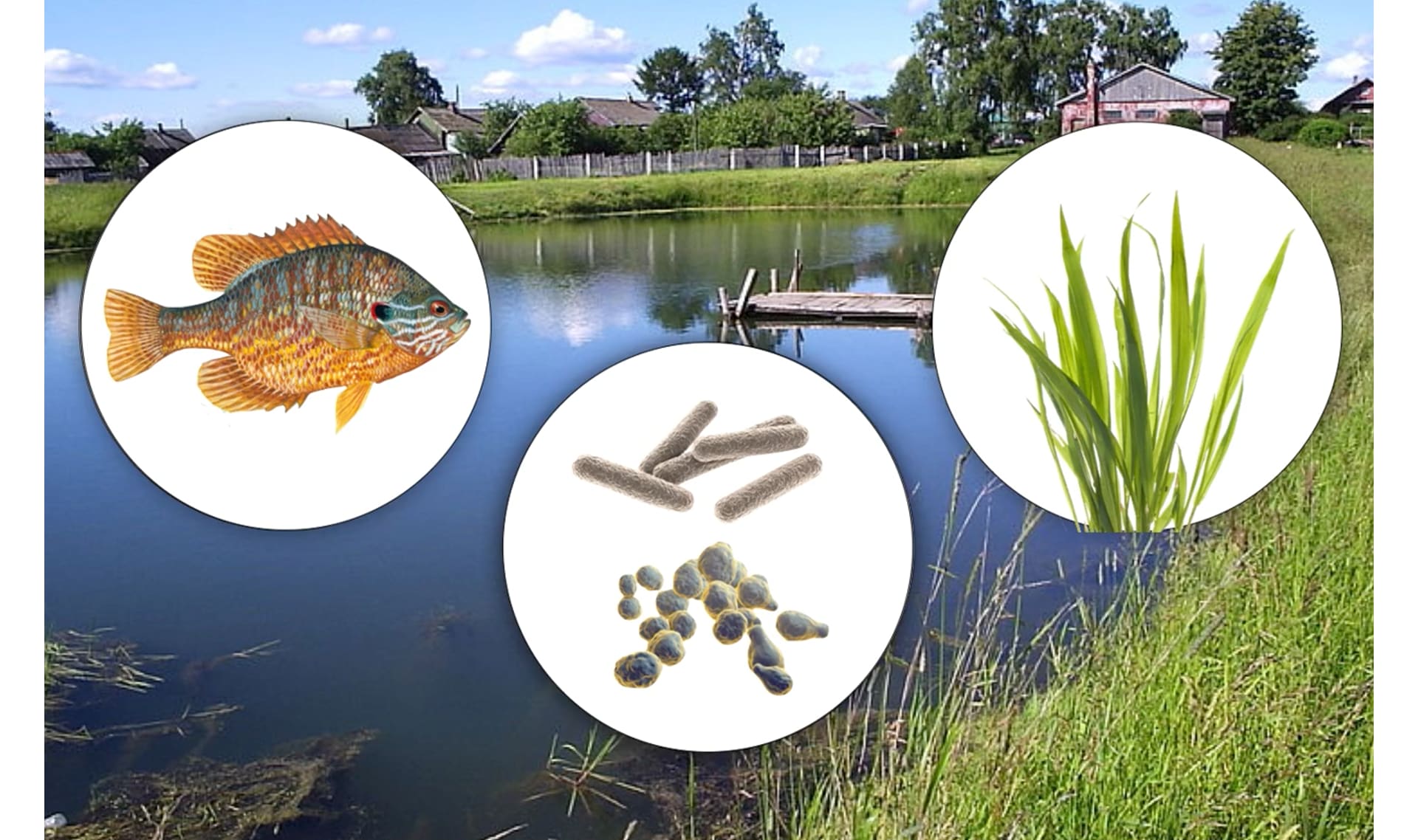
sistema
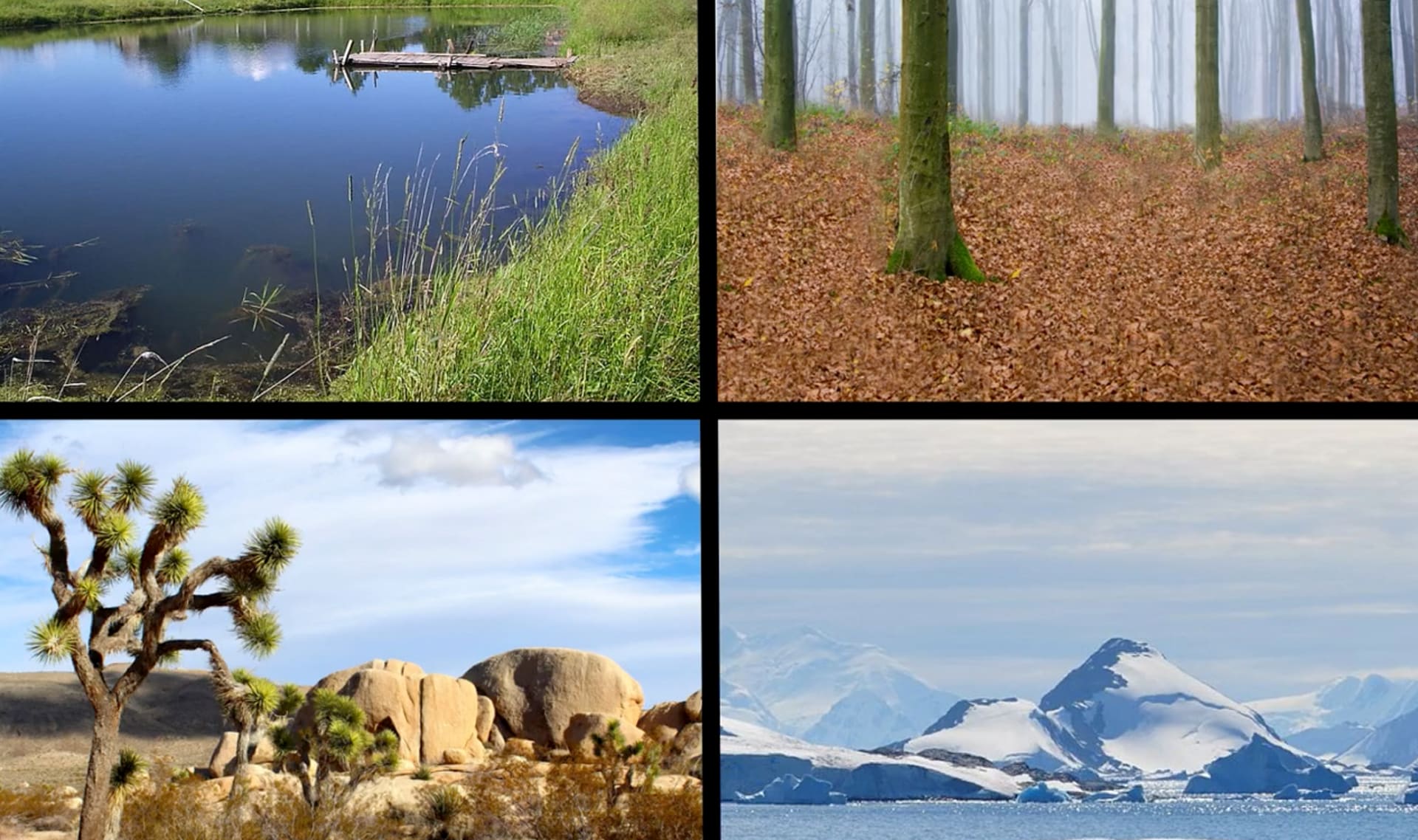
ecosistema
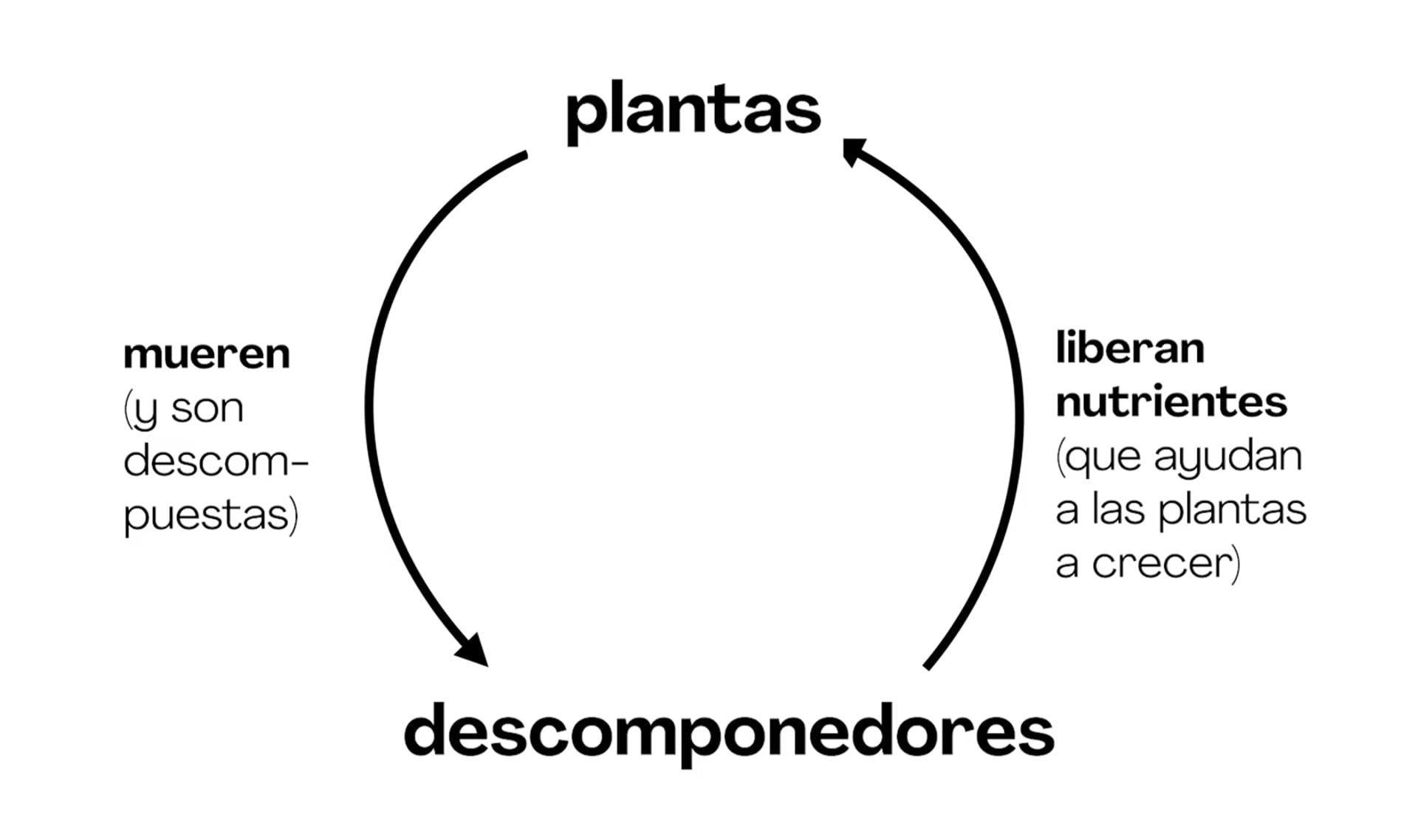
ciclo
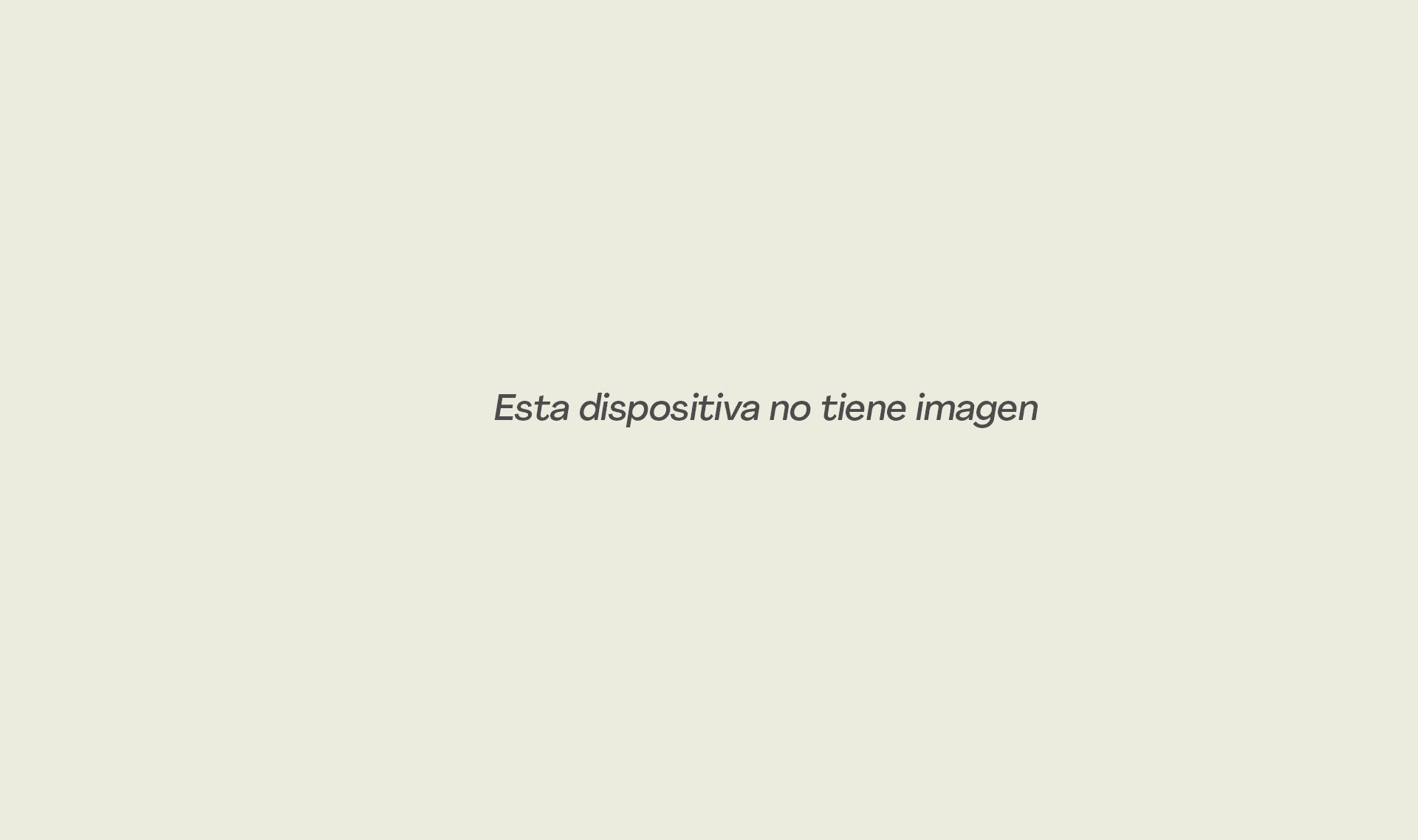
materia

carbono

dióxido de carbono
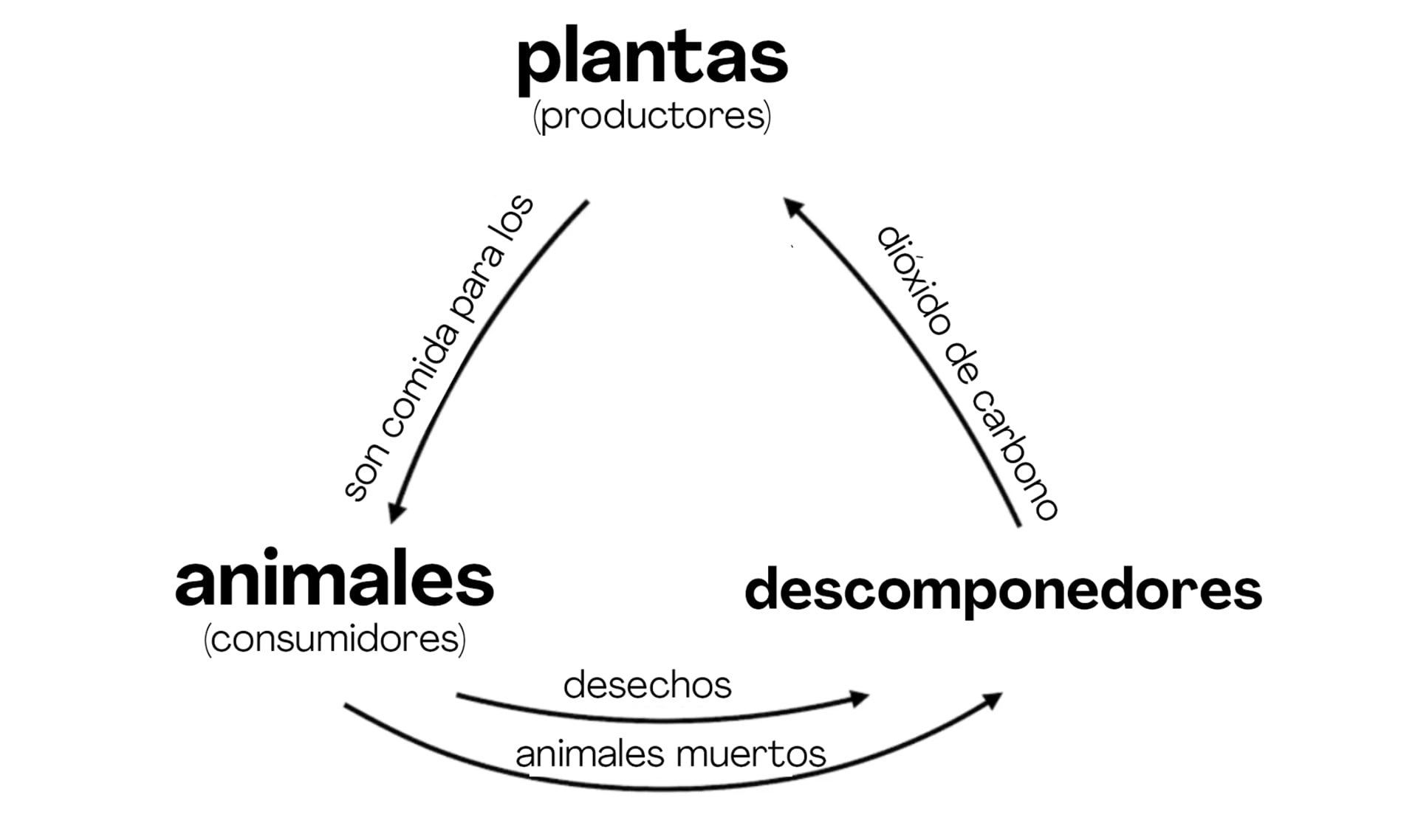
ciclo del carbono

oxígeno
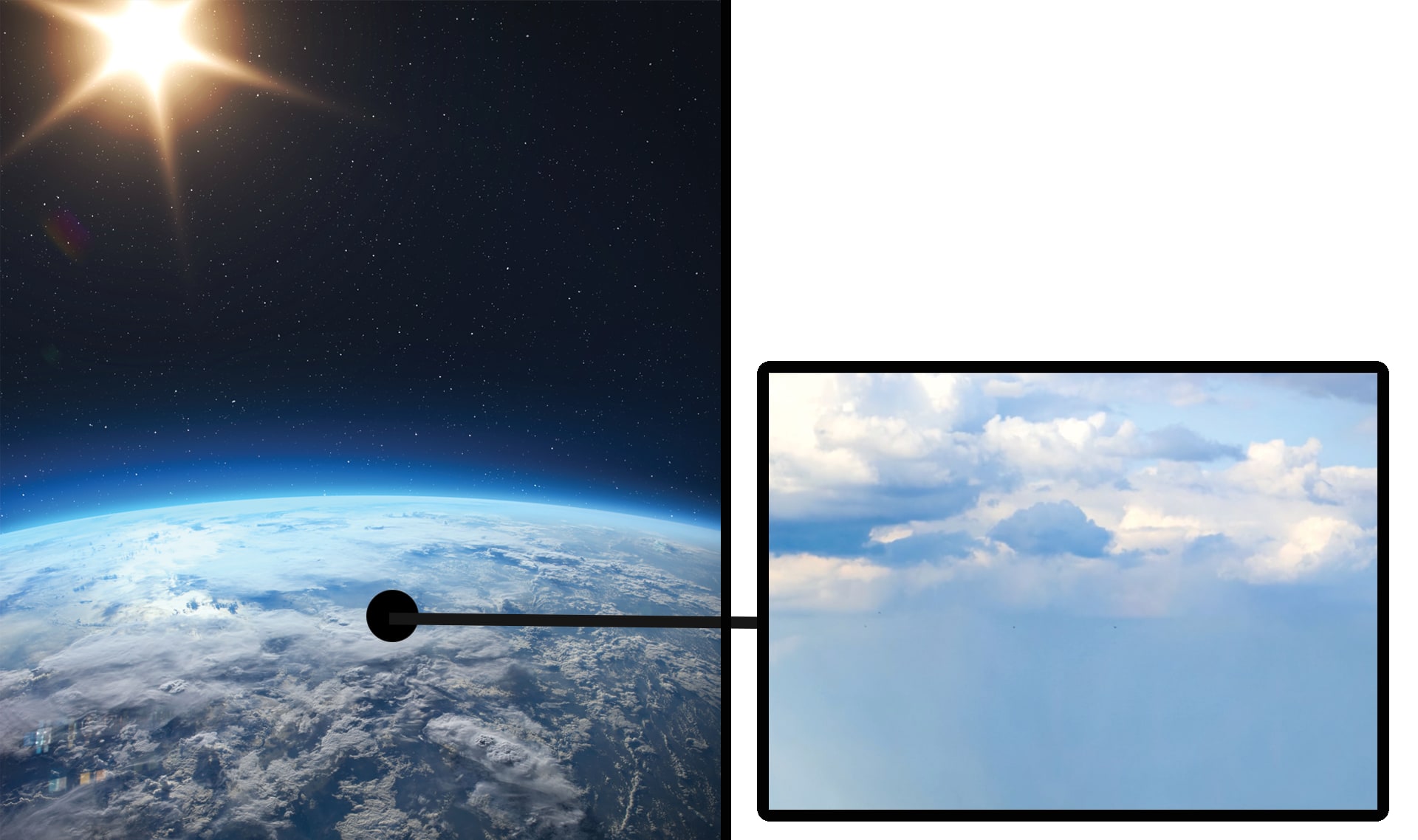
atmósfera
